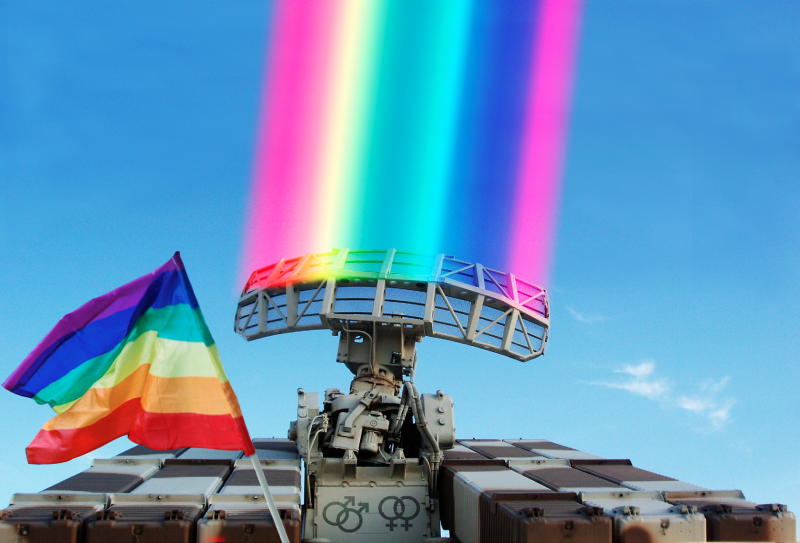Though they invested more than $1 billion in its development, United States military officials have yet to find a use for their gaydar.
“The technology was supposed to help us locate homosexuals,” said Secretary of Defense Leon Panetta at a press conference held at the White House on Tuesday. “And it does that very well. This information is not useful from a strategic standpoint.”
The military made the gaydar their first priority last November in response to a report released by the International Atomic Energy Agency stating that Iran had been developing a nuclear weapon. Military representatives now believe that their decision was unwise. “Now that we have it, it’s very clear to all of us here at the military that we should have focused less on finishing the gaydar,” said Lt. General Lisa Birnbaum at Tuesday’s press conference. “Wars are not won with gaydars.”
“Apparently, my husband is gay,” Birnbaum continued. “But what he’s not is someone who can stop foreign bombs from blowing up our nation. He’s an orthodontist.”
The gaydar’s functionality is handicapped by the refusal of many military officials to go near the device when it is running. “You would never understand why I can’t use the gaydar yet,” said Lt. Howard Mayfield said in an interview with MSNBC. “Nobody will ever understand!”
The government has employed The Center for a New American Security, a Washington D.C. think-tank, to determine how best to utilize the gaydar, but so far little progress has been made. “It’s not appropriate for the U.S. to go around outing militant leaders and terrorists,” said Arnold O’Brian, who leads CNAS. “Even dangerous warlords shouldn’t be forced to disclose their sexuality before they’re ready.”
According to O’Brian and others at CNAS, finding other applications for the device will require additional funding. “We’ve proposed a $300 million initiative to develop the technology further and allow us to detect what kind of kinky sex stuff people are into: foot stuff, food stuff, et cetera,” O’Brian said. “We’re pretty sure that that’ll be far more useful than the gaydar, not to mention way funnier.”
Currently, only a small number of military officers have plans to integrate the gaydar into in daily combat operations. “If I go up against the enemy without knowing whether he’s gay, I’m putting my boys at risk,” said Lt. Roger Warner, currently stationed at the Mexican border. “At risk of falling for someone who will never be able to return their affections.”
Concluded Warner, “And that, my friends, is a non-fatal war casualty of the body’s most fragile organ: the heart.”

